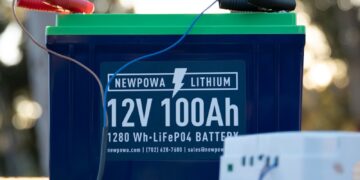Marine vessels powered by fossil fuels are among the worst polluters in the transportation sector. Here’s why:
- High Emissions: A single large boat can emit as much NOx and CO2 as hundreds of cars.
- Water Pollution: Fuel spills and bilge water discharge pollute marine ecosystems.
- Noise Pollution: Diesel engines contribute to underwater noise that disrupts marine wildlife.
In short, boats — whether used for transport, recreation, or commercial shipping — are ripe for sustainable disruption.
Electric Boats: How They Work
Electric yachts and boats typically run on lithium-ion battery systems, much like EVs. Key components include:
- Battery banks for propulsion and onboard energy needs.
- Electric motors, often twin-screw, with high torque and low maintenance.
- Solar panels integrated into decks or roofs.
- Smart energy systems that optimize power usage, range, and charging times.
Some advanced systems even integrate hydrogen fuel cells or wind-assist sails for hybrid use.
Leaders in Electric Marine Innovation
1. Silent-Yachts
Known as the “Tesla of the seas,” Silent-Yachts offers fully solar-powered luxury catamarans. Their models feature up to 30 kW of solar capacity and use high-efficiency motors for silent cruising.
2. Candela
This Swedish company builds electric hydrofoil boats that “fly” above the water, drastically reducing energy consumption and wake.
3. X Shore
With sleek Scandinavian design, X Shore electric boats combine style with sustainability, boasting up to 100 nautical miles on a single charge.
4. Pure Watercraft
Backed by General Motors, Pure Watercraft focuses on high-performance electric outboard systems for pontoon and recreational boats.
Why Isn’t Tesla in the Boat Business?
It’s a fair question. Elon Musk has mentioned in passing the idea of a Tesla boat, but the company’s focus has remained on land (and space) vehicles. Reasons may include:
- Regulatory complexity in marine sectors.
- Niche market size relative to cars and trucks.
- Development costs and the learning curve of marine engineering.
Still, given Tesla’s expertise in battery and propulsion systems, it’s likely we’ll see some form of electric boat or marine partnership in the future.
The Economic Case for Electric Boats
While upfront costs remain high, electric boats have several long-term advantages:
- Lower fuel and maintenance costs
- Reduced marina fees in some areas due to clean tech incentives
- Tax credits and grants for sustainable marine equipment (varies by region)
Europe is leading the charge, with Norway, the Netherlands, and Germany offering strong subsidies and even banning new combustion-powered boats in certain inland waters.
Use Cases Beyond Luxury
Electric boats aren’t just for the wealthy. Here are growing use cases:
- Water taxis in cities like Venice and Bangkok.
- Tour boats in protected wildlife areas.
- Harbor patrol and municipal utility boats.
- Commercial fishing, where electric boats reduce costs and environmental impact.
Challenges Ahead
- Range Anxiety: Many current models max out at 100-150 nautical miles per charge.
- Charging Infrastructure: Still limited, especially in developing nations.
- Battery Costs: Lithium-ion remains expensive.
Still, these barriers are rapidly eroding thanks to global investment and innovation.
The Future Is Now
By 2030, analysts project that electric boats could make up over 15% of all new marine craft sales. Countries are implementing emission-free lake mandates, marina electrification projects, and ocean decarbonization plans.
The green marine movement is gaining momentum — and early investors, boaters, and tech innovators are already part of it.
So the next time you think about clean energy, don’t just look to the roads or skies. Look to the seas.



















